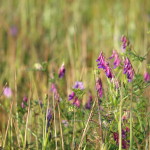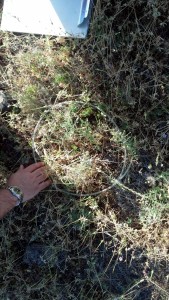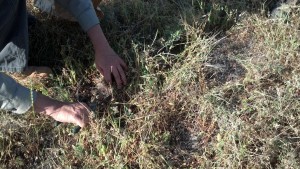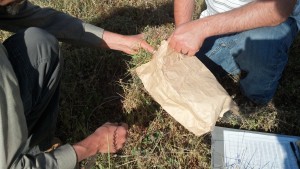
Now that we have a ranch, I am itching to buy a flock of sheep and a couple of cows to graze the open spaces and provide us with nutritious food. However, I have to make sure that what is growing on and in the ground can support our plans. Most of our grazing areas occur on a soil type known as Corning gravelly loam – suitable for rangeland – and have historically been used for grazing cattle and sheep. I had already noticed that we have very little grass and more forbs (broad leafed plants) growing. While some of these (like vetch) are nutritious for animals and good for the soil, they tend to dry up quickly after the last rains, leaving exposed soil and not much volume for our livestock to eat during the six dry months of each year. In addition, we have very few native perennial grasses, which are desirable because they root deeply, holding moisture in the soil and living through extreme weather cycles.
To find out exactly what and how much is growing on our land, I reached out to the Natural Resources Conservation Service and Yolo County Resource Conservation District. Rangeland Management Specialists Nick Gallagher and Jon Gustafson recently visited the ranch to assess species composition and measure the Residual Dry Matter (RDM), or amount of dry plant material remaining at the end of the growing season.
Nick and Jon conducted the tests by setting a wire hoop on the ground. The three most predominant species rooted in the test circle were noted. Then they clipped all the plant material at approximately 1/2 inch above the soil. The clippings were placed in a paper bag, to be dried and weighed. To ensure representative data, the inventory and clippings were repeated at regular intervals along a transect.

By knowing what and how much is growing, we can formulate a land management plan that includes the optimal number of animals on the land as well as a mechanism to evaluate the success of future efforts to increase forage production.


